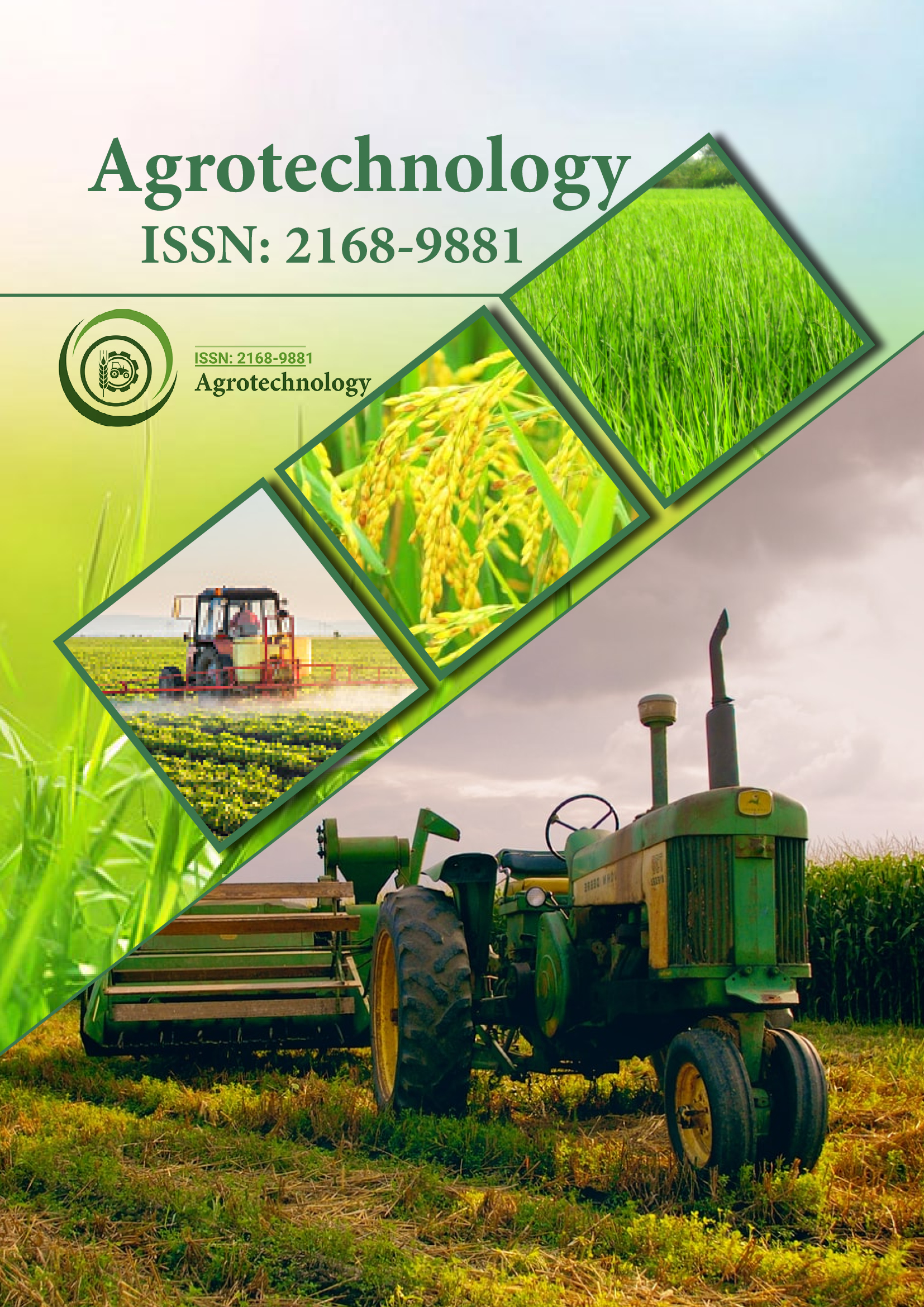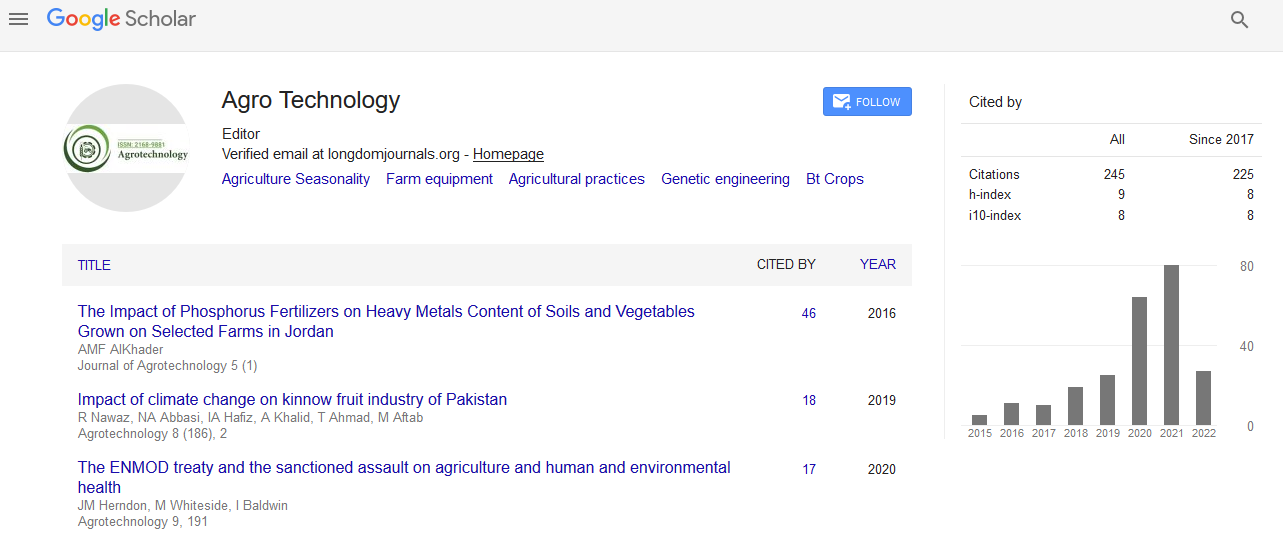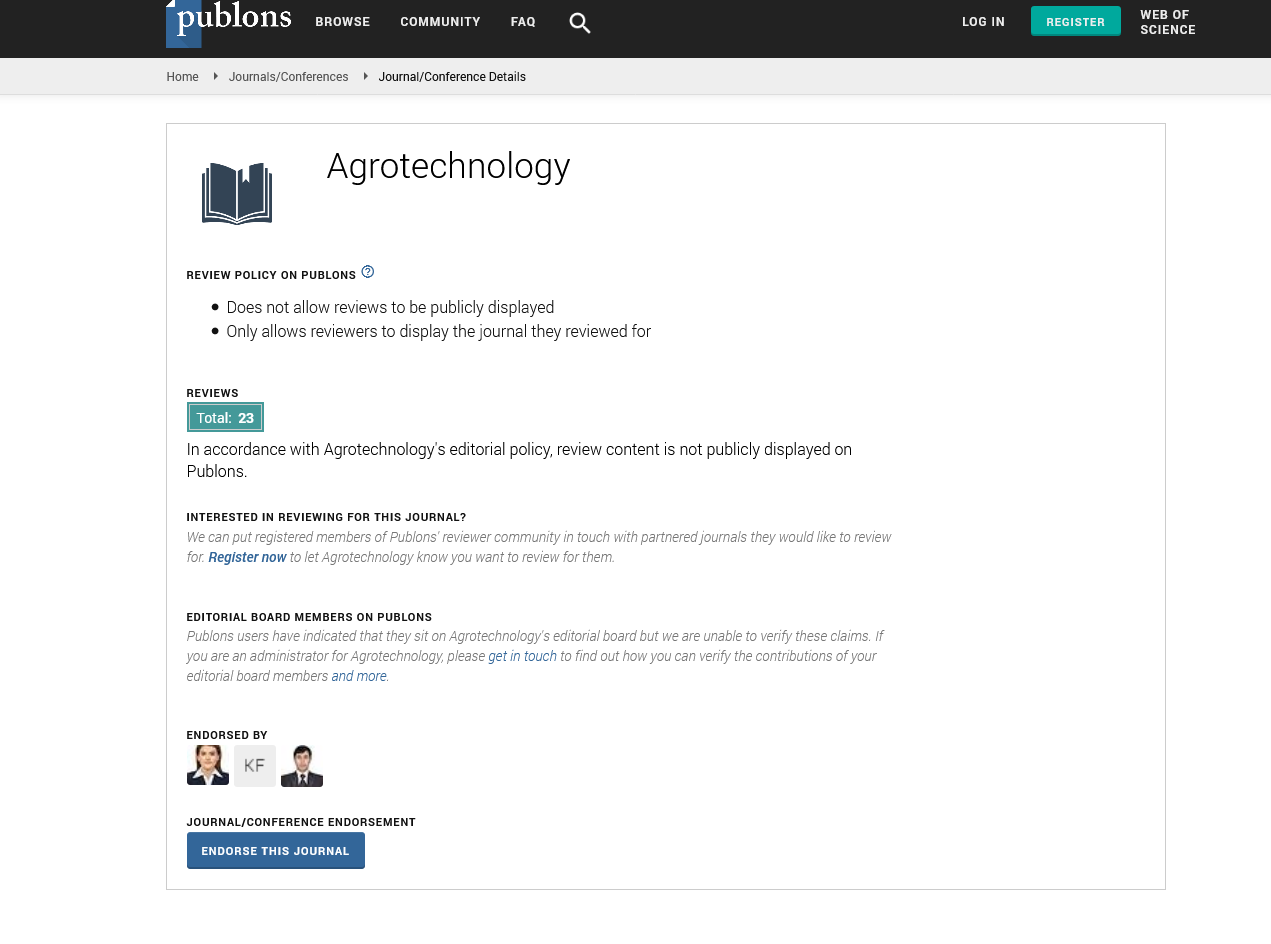Indexed In
- Open J Gate
- Genamics JournalSeek
- Academic Keys
- ResearchBible
- Cosmos IF
- Access to Global Online Research in Agriculture (AGORA)
- Electronic Journals Library
- RefSeek
- Directory of Research Journal Indexing (DRJI)
- Hamdard University
- EBSCO A-Z
- OCLC- WorldCat
- Scholarsteer
- SWB online catalog
- Virtual Library of Biology (vifabio)
- Publons
- Geneva Foundation for Medical Education and Research
- Euro Pub
- Google Scholar
Useful Links
Share This Page
Journal Flyer

Open Access Journals
- Agri and Aquaculture
- Biochemistry
- Bioinformatics & Systems Biology
- Business & Management
- Chemistry
- Clinical Sciences
- Engineering
- Food & Nutrition
- General Science
- Genetics & Molecular Biology
- Immunology & Microbiology
- Medical Sciences
- Neuroscience & Psychology
- Nursing & Health Care
- Pharmaceutical Sciences
Perspective - (2025) Volume 14, Issue 1
Redefining Pest Control with Biopesticides in Corn Agriculture
Thomas Richards*Received: 19-Feb-2025, Manuscript No. AGT-25-28746; Editor assigned: 21-Feb-2025, Pre QC No. AGT-25-28746 (PQ); Reviewed: 07-Mar-2025, QC No. AGT-25-28746; Revised: 14-Mar-2025, Manuscript No. AGT-25-28746 (R); Published: 21-Mar-2025, DOI: 10.35248/2168-9891.25.14.401
Description
The use of biopesticides in corn pest management represents a paradigm shift toward more sustainable and environmentally responsible agricultural practices. As concerns about chemical pesticide resistance, environmental toxicity and regulatory limitations continue to raise, biopesticides derived from natural materials such as animals, plants, bacteria and certain minerals are emerging as a vital component of Integrated Pest Management (IPM) strategies. Their role in managing pest pressure in corn cultivation is becoming increasingly relevant, particularly in the face of evolving pest dynamics and growing market demands for residue-free produce.
Corn, being one of the most widely cultivated crops globally, is subject to a wide array of pests, including corn rootworms, armyworms, cutworms and various species of borers. These pests have traditionally been managed with synthetic insecticides, which, while effective, have led to unintended ecological consequences and the development of pesticide resistance. Biopesticides offer an alternative that can not only reduce chemical dependency but also improve the long-term sustainability of pest control programs.
One of the major advantages of biopesticides is their specificity. Many biopesticides target specific pests while sparing beneficial organisms, an important advantage in preserving ecological balance. For example, products based on Bacillus thuringiensis (Bt) have been particularly effective against lepidopteran pests without harming non-target insects. This selectivity is especially important in corn systems where beneficial insects such as pollinators and natural predators play a key role in maintaining pest populations at manageable levels.
Moreover, the adoption of biopesticides aligns with the growing regulatory pressure to phase out certain high-risk chemical pesticides. In regions with stringent residue limits and food safety requirements, biopesticides provide a viable solution to meet compliance while maintaining crop protection standards. Their generally recognized safety profile also makes them more acceptable to consumers and export markets, thus supporting both environmental and economic goals.
Despite their advantages, the integration of biopesticides into corn pest management systems is not without challenges. The efficacy of biopesticides can be influenced by environmental factors such as temperature, humidity and UV exposure, which may affect their stability and performance in field conditions. Unlike synthetic chemicals that offer broad-spectrum and strong control, biopesticides often require precise application timing and conditions to achieve optimal results. This demands a higher level of management skill and understanding from farmers and agronomists, underscoring the need for robust extension services and farmer training programs.
Additionally, the commercial development and registration of biopesticides often face regulatory and financial hurdles. While some countries have introduced streamlined approval processes for biopesticides, others still require data and compliance frameworks similar to those for chemical pesticides, limiting innovation and delaying market entry. Encouraging supportive policies, research funding and public-private partnerships can help overcome these barriers and accelerate the availability of effective biopesticide products for corn growers.
Advancements in biotechnology and microbial research are expanding the possibilities for novel biopesticide formulations and delivery systems. For example, the use of microencapsulation techniques can improve the stability and controlled release of active ingredients. The application of RNA interference (RNAi)-based biopesticides and the development of microbial consortia tailored to specific pest complexes are promising avenues that could redefine the precision and effectiveness of biopesticide solutions. Integrating these innovations with real-time pest monitoring and decision-support tools will be main factor to maximizing their potential within IPM frameworks.
Importantly, biopesticides should not be viewed as standalone replacements for chemical pesticides, but rather as complementary tools in a diversified pest management strategy. Their integration must be strategic, considering crop phenology, pest population dynamics and resistance management principles. When used in rotation or in combination with other control measures such as cultural practices, pheromone traps and resistant crop varieties, biopesticides can significantly enhance the resilience and sustainability of corn production systems.
In conclusion, the analysis of biopesticides in corn pest management highlights both the potential and the complexity of transitioning to biologically based pest control methods. The success of biopesticides depends on scientific innovation, farmer education, regulatory support and a systems-level approach to agriculture that values ecological health alongside productivity. As climate change and ecological degradation continue to influence pest behavior and pressure, biopesticides provide a forward-looking solution that can align agricultural practices with environmental stewardship and food system resilience.
Citation: Richards T (2025) Redefining Pest Control with Biopesticides in Corn Agriculture. Agrotechnology. 14:401.
Copyright: © 2025 Richards T. This is an open access article distributed under the terms of the Creative Commons Attribution License, which permits unrestricted use, distribution, and reproduction in any medium, provided the original author and source are credited.


